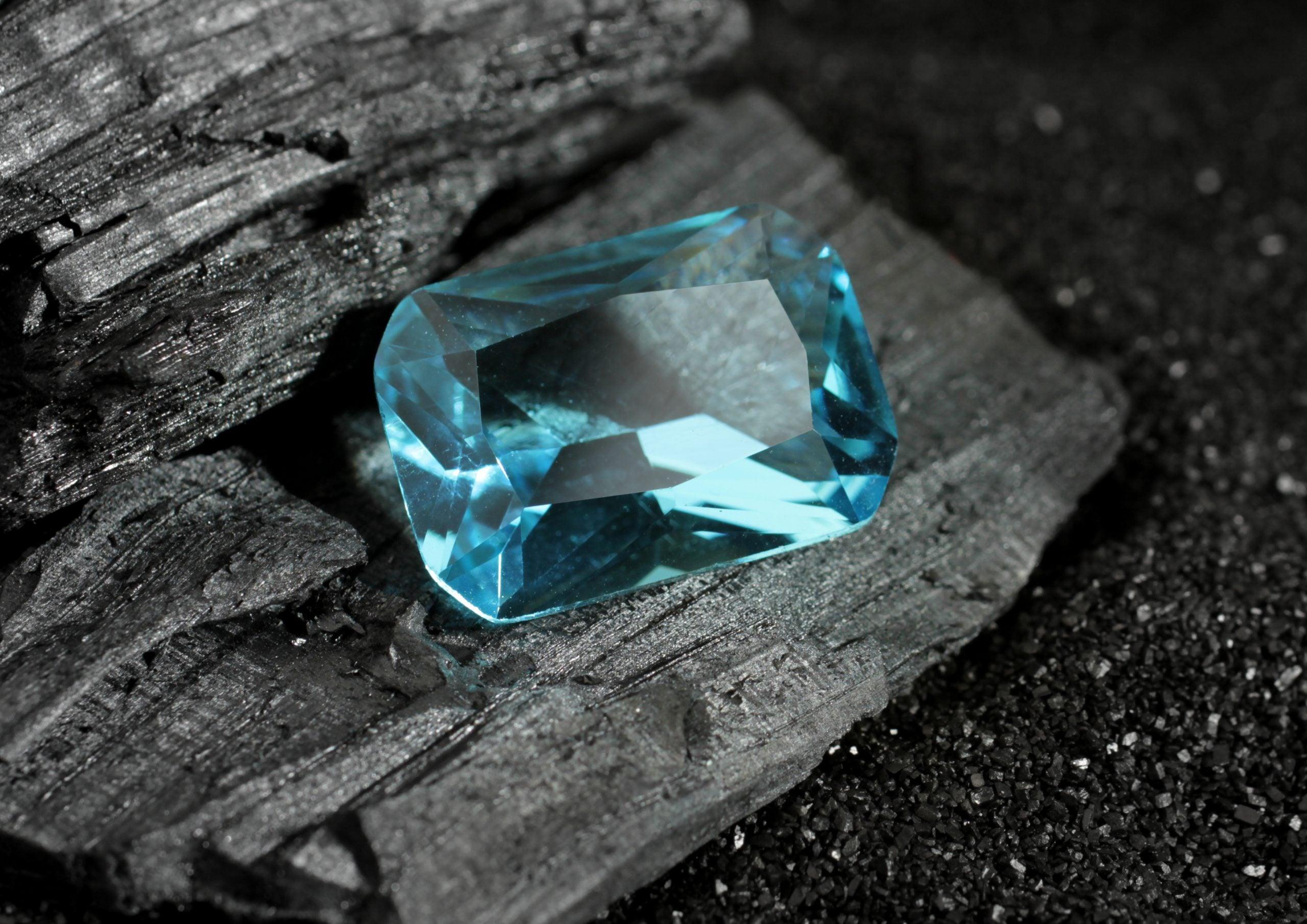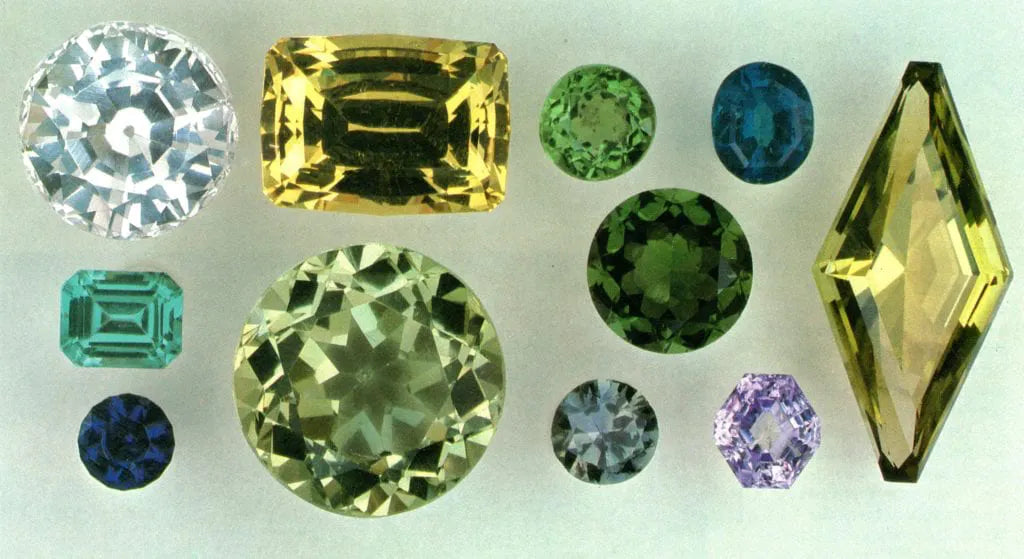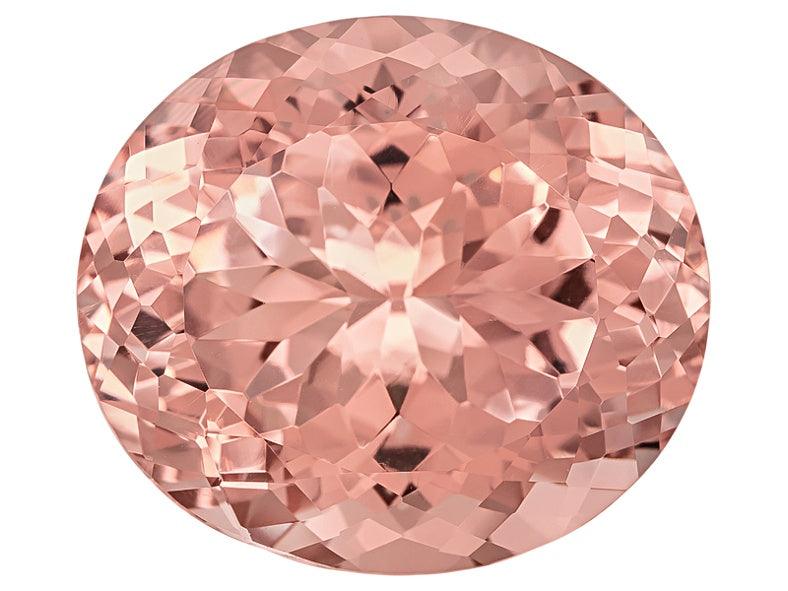
Aquamarine: The Sparkling Stone That Resembles the Sea
Aquamarine, the breathtaking gemstone of the sea, is as captivating as a sparkling ocean wave. Its alluring color ranges from the palest blue to the deepest blue-green, evocative of the crystal-clear waters of a tropical paradise. This precious stone is not only cherished for its beauty, but also for its unique qualities that set it apart from other gemstones. From its exquisite hues to its durability, aquamarine is a true marvel of nature.
Aquamarine is a member of the beryl family, which also includes emerald and morganite. What sets aquamarine apart from other beryl gemstones is its unique coloring. Aquamarine’s color is caused by traces of iron within its crystal structure. This combination creates a breathtaking gemstone that’s been cherished throughout history for its beauty.
The scientific detail of how aquamarine is formed is fascinating. Aquamarine is formed through the natural process of crystallization. This happens when magma, or molten rock, cools and forms igneous rocks. During the cooling process, beryl crystals are formed and, as they grow, they can incorporate traces of iron, which causes the blue-green color of aquamarine. Aquamarine can also be formed in sedimentary rocks, where beryl is exposed to water with iron, which creates the blue-green color.
The chemical composition of aquamarine is beryllium aluminum silicate. Its physical structure is hexagonal, and its hardness on the Mohs scale is between 7.5 and 8, which makes it durable enough for everyday wear. Its clarity is exceptional, and it often forms in large, clean crystals.
Aquamarine was first discovered in the early 1800s in Brazil. Today, it can be found in several locations worldwide, including Pakistan, Russia, Nigeria, Madagascar and the United States. Brazil remains the primary source of high-quality aquamarine, with a distinctive blue-green color that’s prized by jewelry designers.
Aquamarine has been cherished throughout history for its special meanings, folklore and legends. Ancient Greeks and Romans believed that aquamarine could protect sailors from the dangers of the sea and ensure a safe journey. It’s also said to enhance communication skills, bring peace and harmony, and soothe emotions. Aquamarine is associated with the throat chakra, which promotes effective communication and self-expression.
In addition to its spiritual and emotional properties, aquamarine is often given as a gift for significant life events such as birthdays, weddings and anniversaries. It’s also used as a birthstone for those born in March. Aquamarine is a symbol of love, hope and fidelity, making it a popular choice for engagement rings and other meaningful jewelry.
Aquamarine can be treated in several ways to enhance its color and clarity, such as heat treatment and irradiation. However, natural untreated aquamarine is highly prized and often more valuable.
Some of the most significant and famous aquamarine stones and jewelry include the Dom Pedro Aquamarine, which weighs over 10,000 carats, and the Hirsch Aquamarine necklace, which was worn by actress Elizabeth Taylor.
The Dom Pedro Aquamarine is one of the largest and most famous aquamarines in the world. It was discovered in the late 1980s in Brazil and weighs a remarkable 10,363 carats. The gemstone is named after the Brazilian emperor Dom Pedro I, who was the first ruler of the independent empire of Brazil. The Dom Pedro Aquamarine is notable not only for its massive size, but also for its remarkable clarity and color. It’s considered a masterpiece of lapidary art and is often displayed at the Smithsonian Institution’s National Museum of Natural History in Washington, D.C.
The Hirsch Aquamarine necklace is another famous aquamarine piece of jewelry that was once worn by actress Elizabeth Taylor. The necklace features a stunning 47-carat aquamarine pendant, which is surrounded by diamonds and set in platinum. The aquamarine has a rich blue-green color that’s highly coveted by gemstone collectors and jewelry enthusiasts alike. The necklace was named after the jeweler who designed it, Frederick Hirsch, and was sold at auction in 2011 for more than $2 million.
In addition to these famous aquamarines, there are also several royal aquamarines that have been treasured throughout history. For example, the Portuguese Crown Jewels feature a large aquamarine tiara that’s adorned with diamonds and pearls. The tiara was made in the late 19th century and was worn by several Portuguese queens and princesses.
Another notable royal aquamarine is the Stuart Tiara, which is part of the British Crown Jewels. The tiara features a stunning 18.8-carat aquamarine at its center, which is surrounded by diamonds and set in gold and silver. The tiara was originally created for Queen Victoria’s daughter, Princess Louise, and has since been worn by several British queens and princesses.
Aquamarine is typically cut into various shapes such as oval, emerald, pear and round. It has a typical carat weight range of 1 to 5 carats, with larger sizes being rare and more expensive. Aquamarine’s price per carat can range from $50 to $500, depending on the quality, size and color of the gemstone.
Today, aquamarine and aquamarine jewelry can be found in a variety of styles and designs, from classic to contemporary. Whether you’re looking for an engagement ring or a unique piece of jewelry to add to your collection, aquamarine is a gemstone that will not disappoint. Its mesmerizing beauty, durability and spiritual properties make it an excellent choice for any occasion.
In conclusion, aquamarine is a precious stone of the sea that’s been cherished for centuries for its beauty and unique qualities. From its exquisite hues to its durability and spiritual properties, aquamarine is a true marvel of nature. Its scientific detail is fascinating, and its history is rich with folklore and legends. Aquamarine’ s association with love, hope and fidelity make it a popular choice for jewelry designers, and its timeless beauty will continue to captivate people for generations to come.


